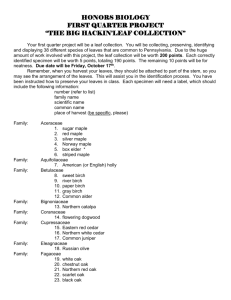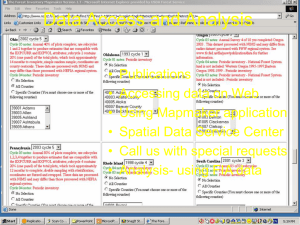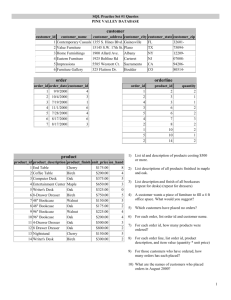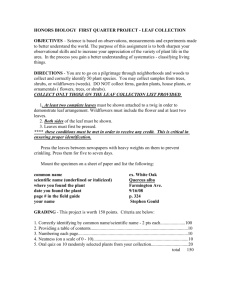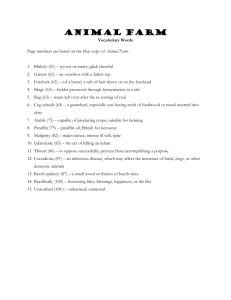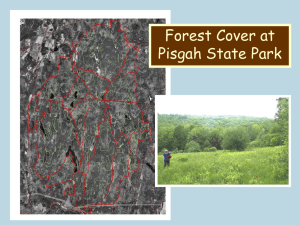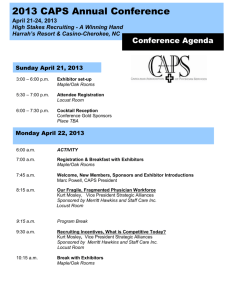Site Report for Alonzo Garcelon
advertisement
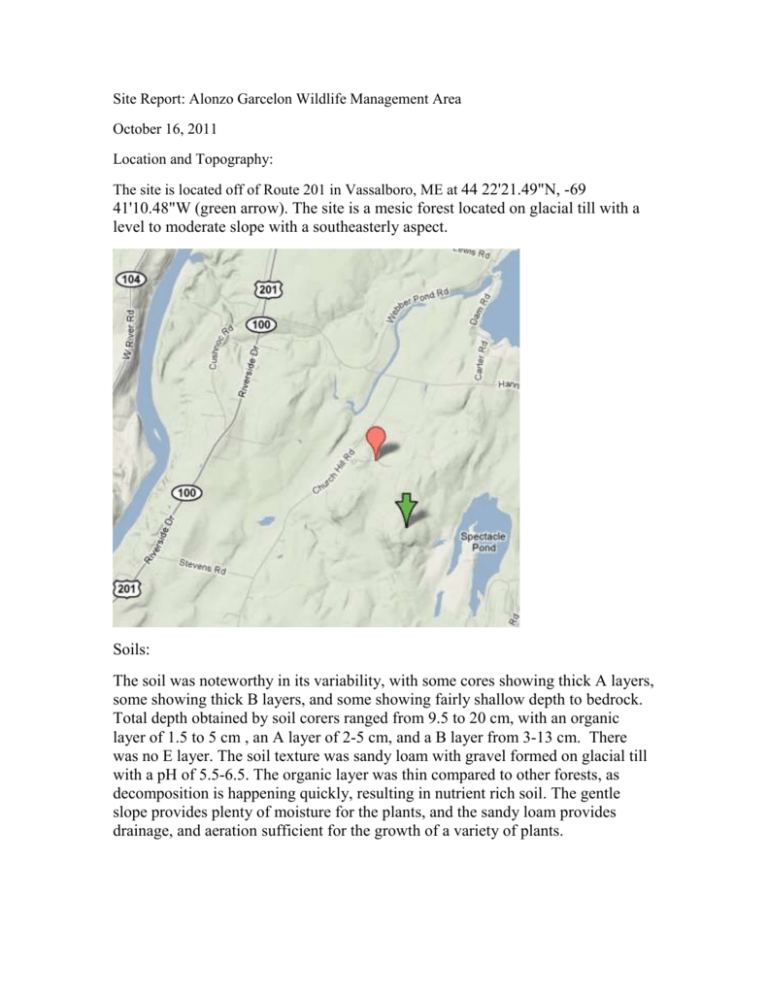
Site Report: Alonzo Garcelon Wildlife Management Area October 16, 2011 Location and Topography: The site is located off of Route 201 in Vassalboro, ME at 44 22'21.49"N, -69 41'10.48"W (green arrow). The site is a mesic forest located on glacial till with a level to moderate slope with a southeasterly aspect. Soils: The soil was noteworthy in its variability, with some cores showing thick A layers, some showing thick B layers, and some showing fairly shallow depth to bedrock. Total depth obtained by soil corers ranged from 9.5 to 20 cm, with an organic layer of 1.5 to 5 cm , an A layer of 2-5 cm, and a B layer from 3-13 cm. There was no E layer. The soil texture was sandy loam with gravel formed on glacial till with a pH of 5.5-6.5. The organic layer was thin compared to other forests, as decomposition is happening quickly, resulting in nutrient rich soil. The gentle slope provides plenty of moisture for the plants, and the sandy loam provides drainage, and aeration sufficient for the growth of a variety of plants. Woody Plants: The forest is dominated by sugar maple (Acer saccharum) and American beech (Fagus grandifolia), together making up over half of the sampled stems. The site contained northern hardwoods that have adapted to shady, moist, nutrient-rich environments, such as basswood (Tilia americana), white ash (Fraxinus americana), red oak (Quercus rubra), red maple (Acer rubrum) and white oak (Quercus alba) along with sugar maple and beech. Beech was abundant, but the stems were not large, as can be seen by the contrast between its relative dominance and density/frequency. The red oak and hemlock trees are about 70 years old (60-77). The understory was dominated by American beeches and sugar maples, but remained fairly open. The region had few early successional species, suggesting a lack of disturbance for some time. The site supports about 828 trees per hectare and has a basal area of 60 m2/ha Table 1. Relative density, dominance, frequency and importance values of trees > 10 cm found in four 25m2 plots within the Alonzo Garcelon Wildlife Management Area Rel. Density Rel. Dom. Rel. Freq. I.V. Sugar maple (A. saccharum) 0.35 0.51 0.27 1.13 American beech (F. grandifolia) 0.23 0.14 0.27 0.64 Red maple (A. rubrum) 0.12 0.02 0.09 0.23 Basswood (T. americana) 0.08 0.11 0.09 0.28 White ash (F. americana) 0.08 0.07 0.09 0.24 White oak (Q. alba) 0.08 0.10 0.09 0.27 Red oak (Q. rubra) 0.08 0.05 0.09 0.22 Species Land Use: The most common species found were beeches and maples, which are late successional species. This indicates that the land has not been disturbed by fire or other environmental factors. It was likely used somewhere between 75 and 100 years ago for agricultural purposes. Today it is used recreationally for hiking, fishing, and hunting. Authors: Maeve McGovern, Pete Gabranski, and Suzy Bowen worked on each part together, with Maeve completing the write up, Pete the powerpoint, and Suzy the excel calculations. Prof. Stone edited the final draft.
